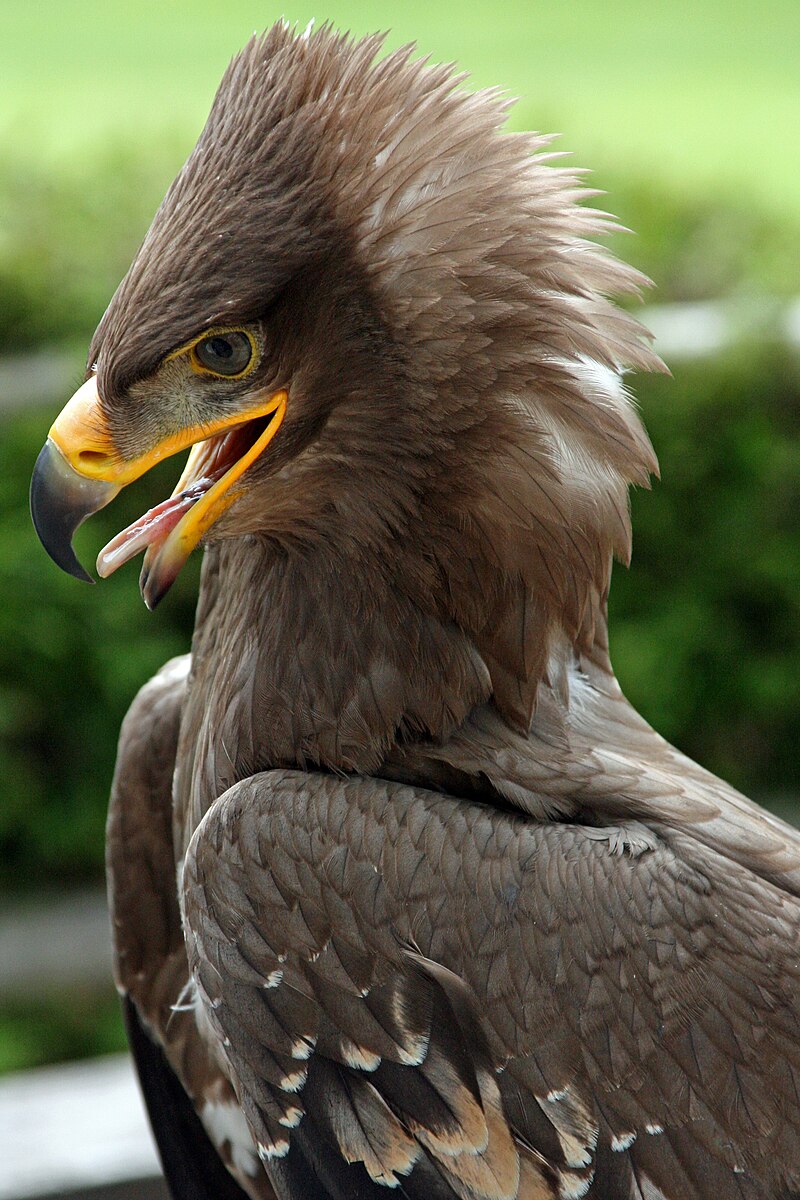The Steppe Eagle (Aquila nipalensis) is a large bird of prey that primarily resides in the grasslands and open woodlands of Europe, Asia, the Middle East, and Africa. To protect itself, the Steppe Eagle employs several strategies, including its physical attributes, behavioral adaptations, and habitat preferences.
Physical Attributes of the Steppe Eagle
-
Size and Strength: The Steppe Eagle has a wingspan of up to 7.5 feet (2.3 meters) and a body weight of 4.5 to 9.5 pounds (2 to 4.3 kilograms), making it a formidable presence in its environment. Its powerful talons and hooked beak are effective tools for capturing and consuming prey.
-
Camouflage: The Steppe Eagle’s brown and white plumage allows it to blend in with its surroundings, providing it with a stealth advantage when hunting or avoiding potential threats.
Behavioral Adaptations of the Steppe Eagle
 Image source: Steppe Eagle by Fimb
Image source: Steppe Eagle by Fimb
-
Flight Patterns: The Steppe Eagle’s flight patterns are characterized by slow, deep wing beats and a heavier flight pattern than spotted eagles. This allows it to maintain stability during unsteady maneuvers and adapt to wind and thermal conditions.
-
Silent and Cautious: The Steppe Eagle is generally not very vocal, especially when not breeding, which helps it avoid attracting unwanted attention from potential predators or competitors.
-
Nesting Habits: The Steppe Eagle typically nests on the ground or in trees, using sticks and other materials to construct relatively flat nests. This provides some protection for its eggs and young from ground-based predators.
Habitat Preferences of the Steppe Eagle
-
Open Spaces: The Steppe Eagle prefers open spaces, such as flat plains, arid grasslands, semi-deserts, and desert edges, which offer fewer hiding places for potential predators.
-
Avoidance of Human-Fragmented Areas: The Steppe Eagle generally avoids agricultural land and human-fragmented areas, reducing its exposure to human-related threats.
Conservation Efforts for the Steppe Eagle
The Steppe Eagle is currently listed as an Endangered species due to significant population declines over the past few decades, primarily caused by habitat loss, collisions with power lines, and human persecution. Conservation efforts are underway to protect the Steppe Eagle and its habitat, including scientific research, habitat conservation, education, and community development initiatives.
In conclusion, the Steppe Eagle employs a range of physical attributes, behavioral adaptations, and habitat preferences to protect itself from potential threats. These strategies, combined with ongoing conservation efforts, are crucial for the survival and recovery of this majestic bird of prey.

